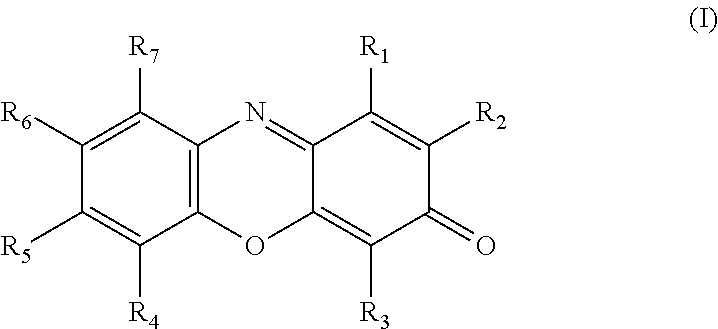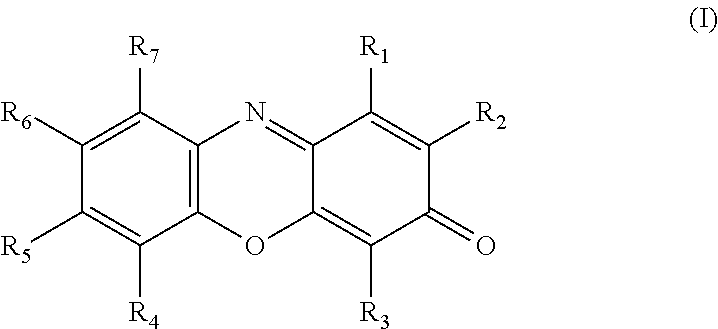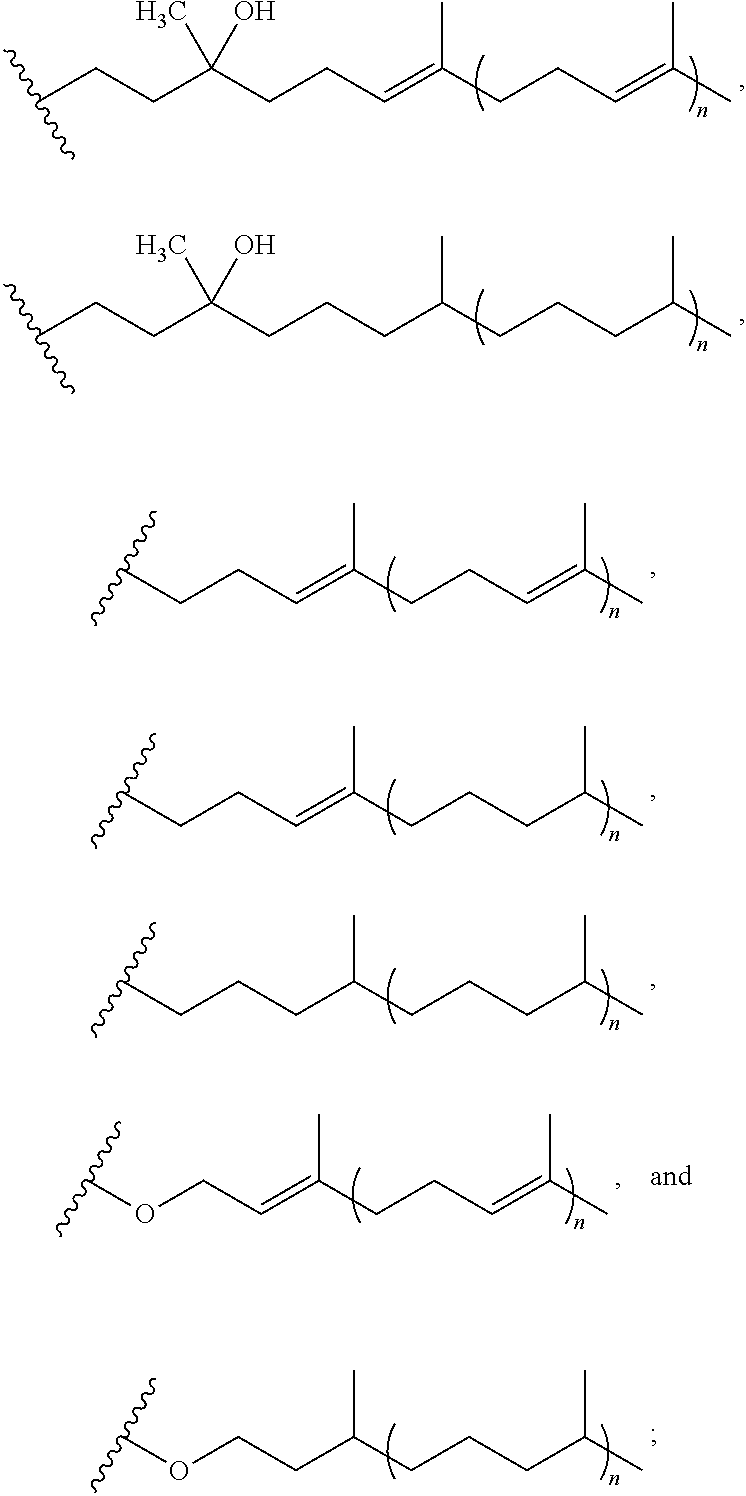Resorufin derivatives for treatment of oxidative stress disorders
a technology of resorufin and derivatives, which is applied in the field of resorufin derivatives for treatment of oxidative stress disorders, can solve the problems of cell damage and cell death, oxidative damage to the cellular structure and machinery, and the rate of damage to the cell membrane exceeds the capacity of systems which control or repair, so as to improve the health of the patient and raise the level of atp in the individual
- Summary
- Abstract
- Description
- Claims
- Application Information
AI Technical Summary
Benefits of technology
Problems solved by technology
Method used
Image
Examples
example a
Synthesis of Methyl 1,2,4-trimethyl-3-oxo-3H-phenoxazine-7-carboxylate
[0149]
Step 1: 1,4-bis(benzyloxy)-2,3,5-trimethylbenzene (1)
[0150]15.32 g [101 mmole] of 2,3,5-trimethylhydroquinone was weighed into a 1000 mL round bottom flask fitted with a stir bar, septum, and nitrogen inlet. Established and maintained nitrogen atmosphere. Added 100 mL of anhydrous DMF and stirred to obtain a clear light brown solution. Sparged the solution with nitrogen for 10 min. Added 103.23 g [317 mmole] of cesium carbonate. Mixture became dark. Added 36 mL [300 mmole] of benzyl bromide. The mixture became light yellow with suspended white solid. Stirred at 60° under nitrogen for 2 h. LC-MS analysis indicated complete consumption of the starting material, with the desired product as the major component. Poured the reaction mixture into 2000 mL water. Stirred the suspended lumpy black solid and warmed to 90° with stirring. The solid melted ˜75°. Allowed the mixture to cool to room temperature. Collected t...
example b
Synthesis of 2,5-bis(benzyloxy)-3,4-dimethoxy-6-methylphenol
[0157]
2,3-dimethoxy-5-methylbenzene-1,4-diol (1)
[0158]5.29 g [140 mmole] of sodium borohydride was weighed into a 500 mL round bottom flask fitted with an addition funnel and stir bar. Added 150 mL of water. Charged 5.03 g [27.6 mmole] of 2,3-dimethoxy-5-methyl-p-benzoquinone dissolved in a mixture of 75 mL Et2O and 35 mL MeOH into the addition funnel. Started the stirrer in the reaction flask and added the red solution of quinone dropwise over 90 minutes under ambient conditions. The red droplets changed color to yellow upon entering the reaction mixture and there was a mild exotherm with gas evolution. After addition was complete, the two phase yellow solution was stirred at room temperature for 3 h. Quenched the reaction to pH ˜2 with conc. HCl. Extracted the reaction mixture with 3×150 mL MTBE. Washed the combined organic phases with 150 mL of 1.0 M pH 5.5 phosphate buffer, 150 mL of brine, and dried over MgSO4. Added 5...
example 1
Screening Compounds of the Invention in Human Dermal Fibroblasts from Friedreich's Ataxia Patients
[0164]An initial screen was performed to identify compounds effective for the amelioration of redox disorders. Test samples, 4 reference compounds (idebenone, decylubiquinone, Trolox and alpha-tocopherol), and solvent controls were tested for their ability to rescue FRDA fibroblasts stressed by addition of L-buthionine-(S,R)-sulfoximine (BSO), as described in Jauslin et al., Hum. Mol. Genet. 11(24):3055 (2002), Jauslin et al., FASEB J. 17:1972-4 (2003), and International Patent Application WO 2004 / 003565. Human dermal fibroblasts from Friedreich's Ataxia patients have been shown to be hypersensitive to inhibition of the de novo synthesis of glutathione (GSH) with L-buthionine-(S,R)-sulfoximine (BSO), a specific inhibitor of GSH synthetase (Jauslin et al., Hum. Mol. Genet. 11(24):3055 (2002)). This specific BSO-mediated cell death can be prevented by administration of antioxidants or mol...
PUM
| Property | Measurement | Unit |
|---|---|---|
| Pharmaceutically acceptable | aaaaa | aaaaa |
Abstract
Description
Claims
Application Information
 Login to View More
Login to View More - R&D
- Intellectual Property
- Life Sciences
- Materials
- Tech Scout
- Unparalleled Data Quality
- Higher Quality Content
- 60% Fewer Hallucinations
Browse by: Latest US Patents, China's latest patents, Technical Efficacy Thesaurus, Application Domain, Technology Topic, Popular Technical Reports.
© 2025 PatSnap. All rights reserved.Legal|Privacy policy|Modern Slavery Act Transparency Statement|Sitemap|About US| Contact US: help@patsnap.com



